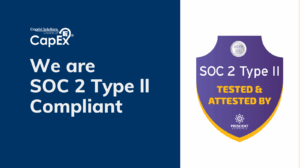Introduction
Capital structure is a fundamental concept in finance that plays a critical role in determining the financial health and sustainability of a business. It refers to the mix of debt and equity a company uses to finance its operations and investments. Striking the right balance in your capital structure is crucial for long-term success, as it can impact your company’s risk profile, cost of capital, and ability to generate value for shareholders. In this article, we will explore what capital structure is, why it matters, and how businesses can optimize it to achieve their financial goals.
The Components of Capital Structure
Capital structure consists of two main components: debt and equity.
- Debt: Debt financing involves borrowing money from lenders, such as banks, bondholders, or other financial institutions, with the promise to repay the principal amount along with interest over a specified period. Debt can take various forms, including bank loans, corporate bonds, or even short-term commercial paper. While taking on debt can provide a business with access to capital for growth or operational needs, it also introduces a financial obligation in the form of interest payments and principal repayment.
- Equity: Equity represents the ownership stake in a company held by its shareholders. It includes common and preferred stock. Equity financing entails selling shares of the company to investors in exchange for capital. Unlike debt, equity does not require regular interest payments or repayment of the principal amount. Instead, shareholders participate in the company’s profits and losses through dividends and capital appreciation.
The Importance of Capital Structure
Why does capital structure matter? It influences several key aspects of a business’s operations and financial health:
- Risk Management: The choice between debt and equity impacts the risk profile of a company. High levels of debt can lead to financial distress if the company struggles to meet interest and principal payments. On the other hand, too much equity dilutes ownership and may reduce financial leverage for growth.
- Cost of Capital: The cost of capital refers to the overall rate of return required by investors and lenders. Companies with a well-balanced capital structure often achieve a lower cost of capital because they combine the advantages of both debt (cheaper financing) and equity (no interest payments).
- Financial Flexibility: Capital structure can affect a company’s ability to adapt to changing market conditions. A flexible capital structure allows a business to raise funds quickly when opportunities arise or weather financial downturns more effectively.
- Value Creation: An optimal capital structure can maximize shareholder value by balancing the benefits of leverage with the costs of debt. Achieving the right mix of financing sources can result in higher returns on equity.
Factors Influencing Capital Structure
Several factors influence a company’s choice of capital structure:
- Industry Norms: Different industries have varying capital structure norms. For instance, capital-intensive industries like utilities and telecommunications often have higher levels of debt due to substantial infrastructure investments.
- Growth Stage: Early-stage companies may rely more on equity financing to fuel growth, while established firms may use a mix of debt and equity.
- Risk Tolerance: A company’s risk tolerance and its ability to service debt payments play a crucial role in determining the balance between debt and equity.
- Tax Considerations: Debt interest payments are often tax-deductible, making debt financing attractive from a tax perspective.
- Market Conditions: Interest rates, investor sentiment, and the availability of financing options can influence a company’s capital structure decisions.
Optimizing Capital Structure
Finding the right balance in your capital structure requires careful analysis and consideration of the factors mentioned above. Here are some steps to optimize your capital structure:
- Evaluate Your Current Position: Start by assessing your current debt-to-equity ratio and comparing it to industry peers. Understand your debt obligations and their terms.
- Consider Future Needs: Analyze your company’s growth plans and capital requirements. Will you need additional financing for expansion, research, or acquisitions?
- Assess Risk Tolerance: Determine your company’s risk tolerance and ability to handle debt obligations, especially in adverse economic conditions.
- Tax Efficiency: Consult with financial experts to explore the tax implications of different financing options.
- Regularly Review and Adjust: Capital structure is not static. It should be periodically reviewed and adjusted to align with changing business dynamics.
Conclusion
In summary, capital structure is a critical aspect of financial management that directly impacts a company’s risk, cost of capital, and value creation potential. Achieving the right balance between debt and equity is essential for the long-term success of any business. By carefully considering industry norms, growth plans, risk tolerance, and tax implications, companies can optimize their capital structure to support their strategic objectives and enhance shareholder value.





